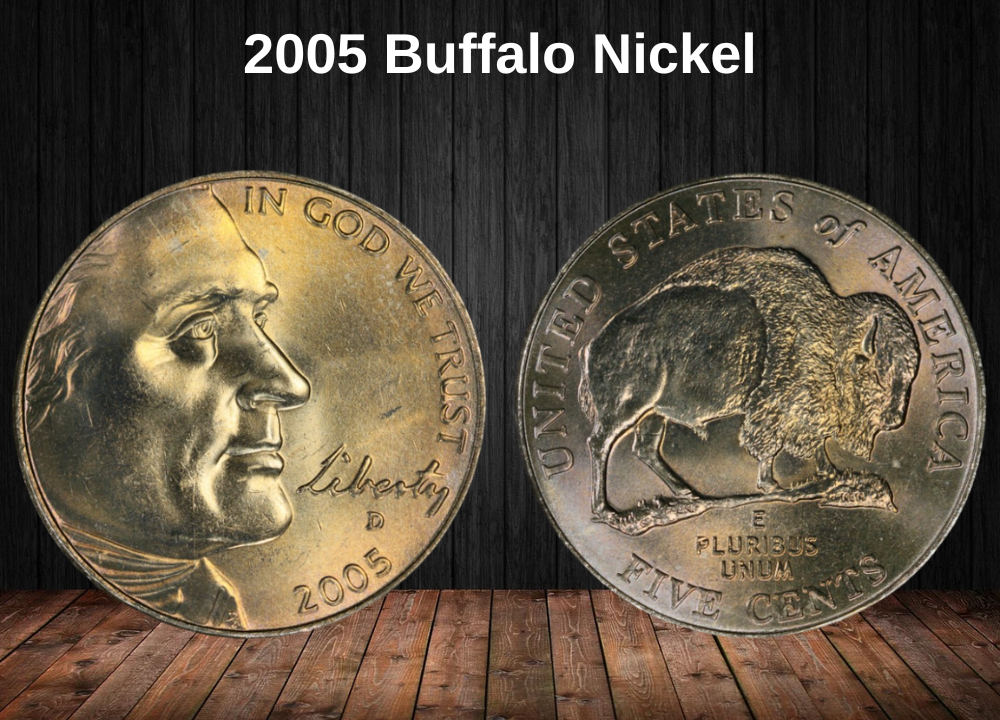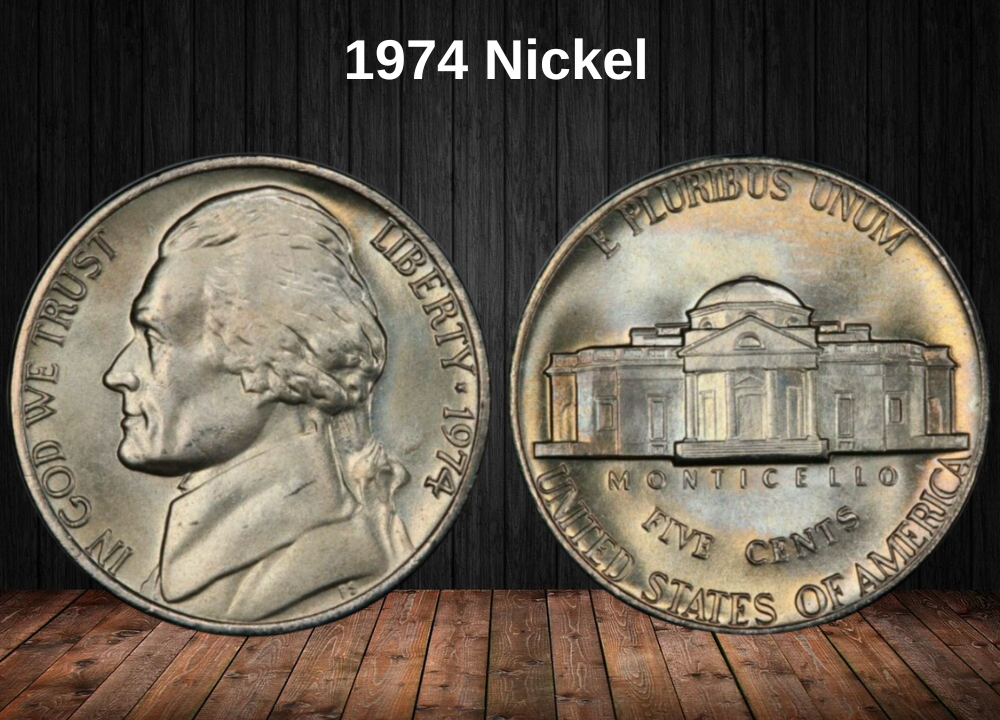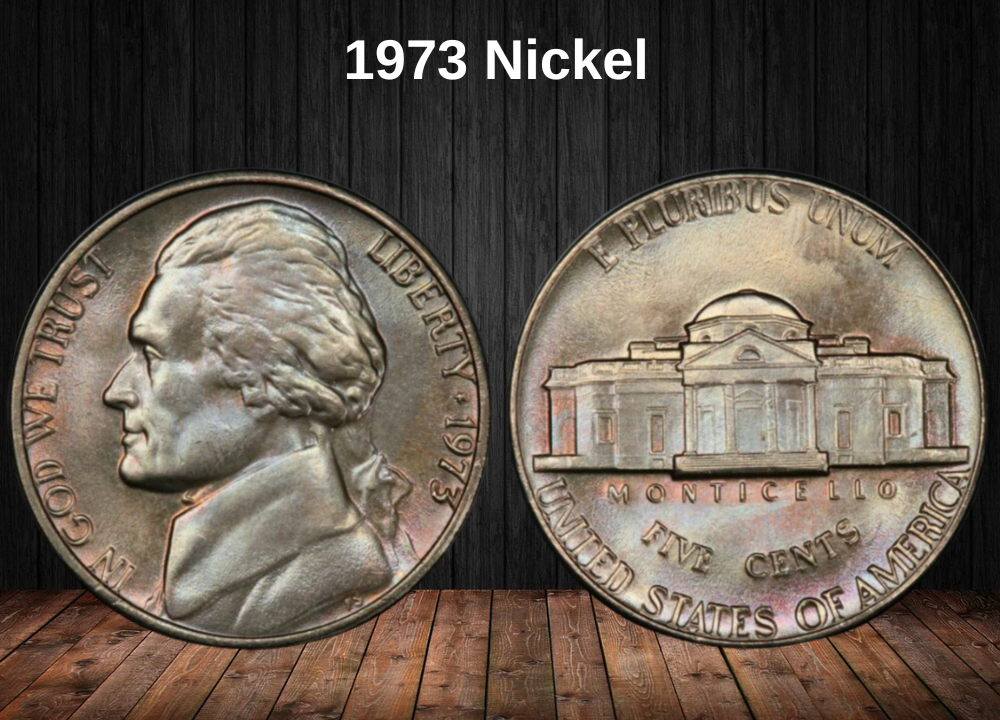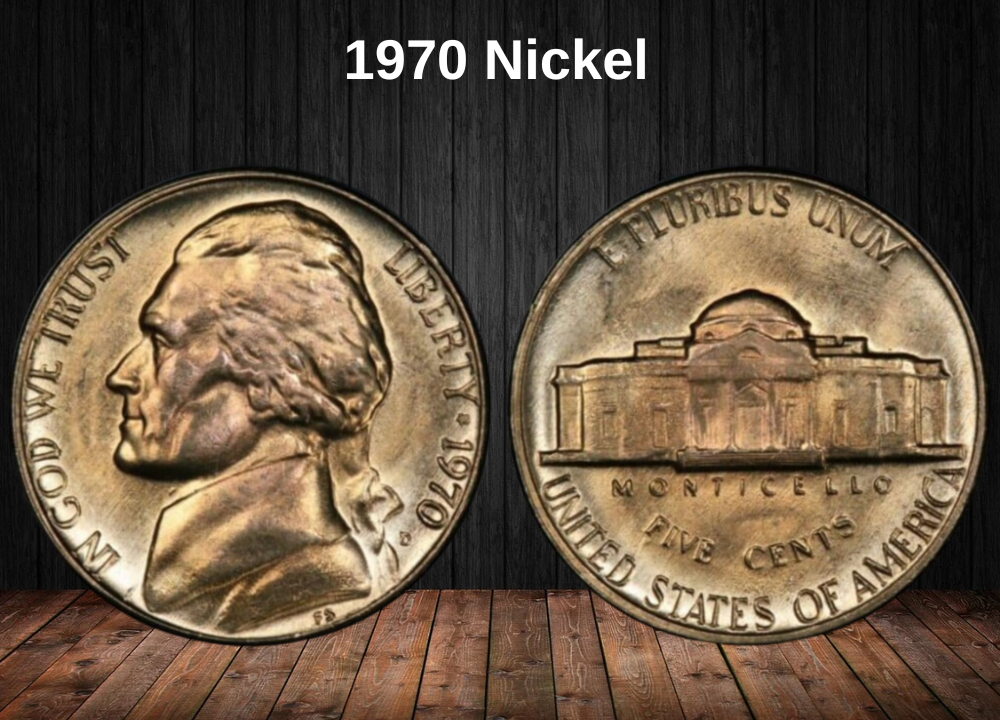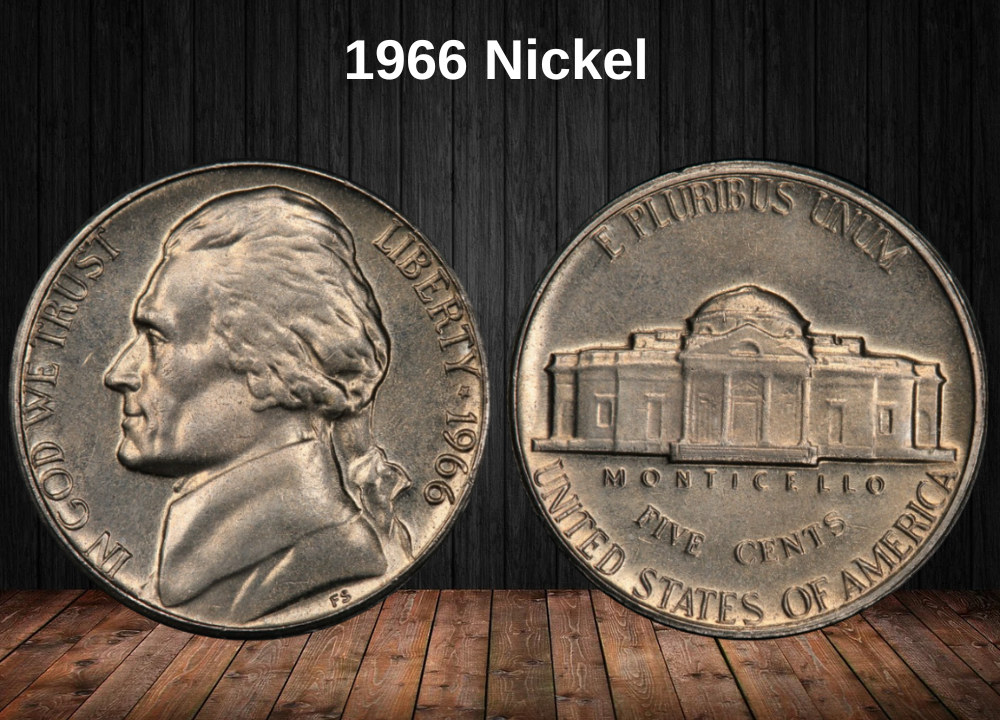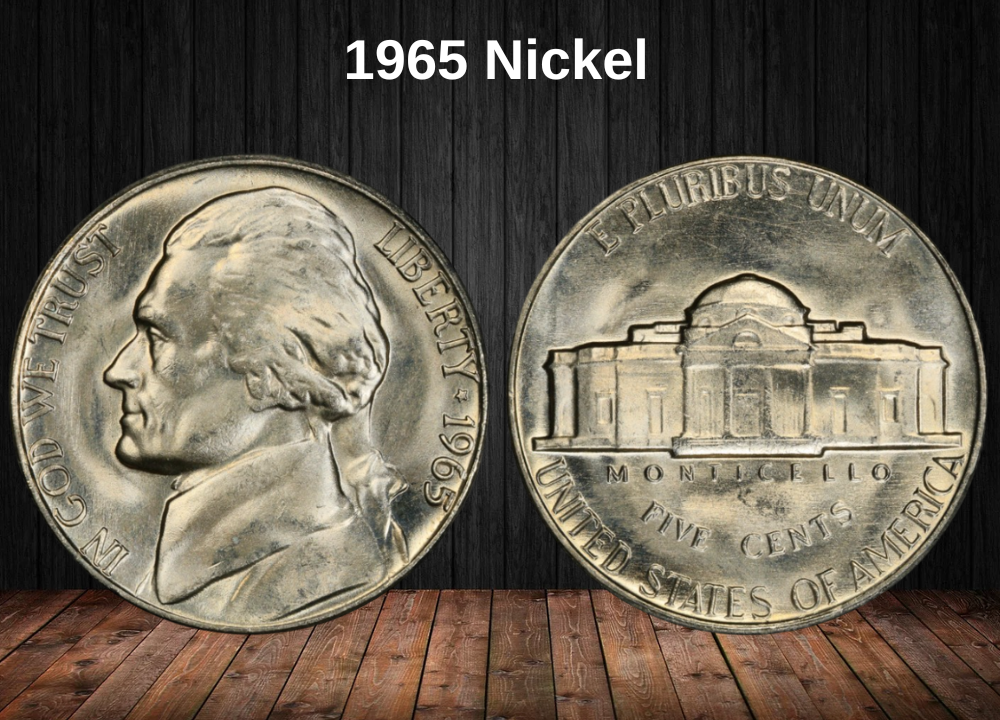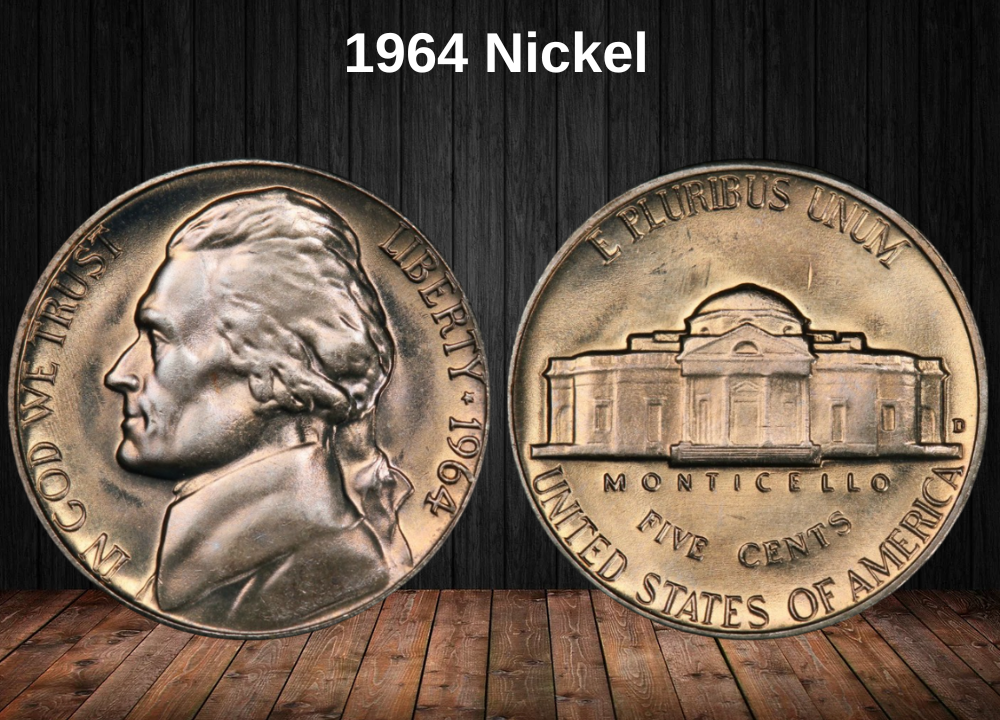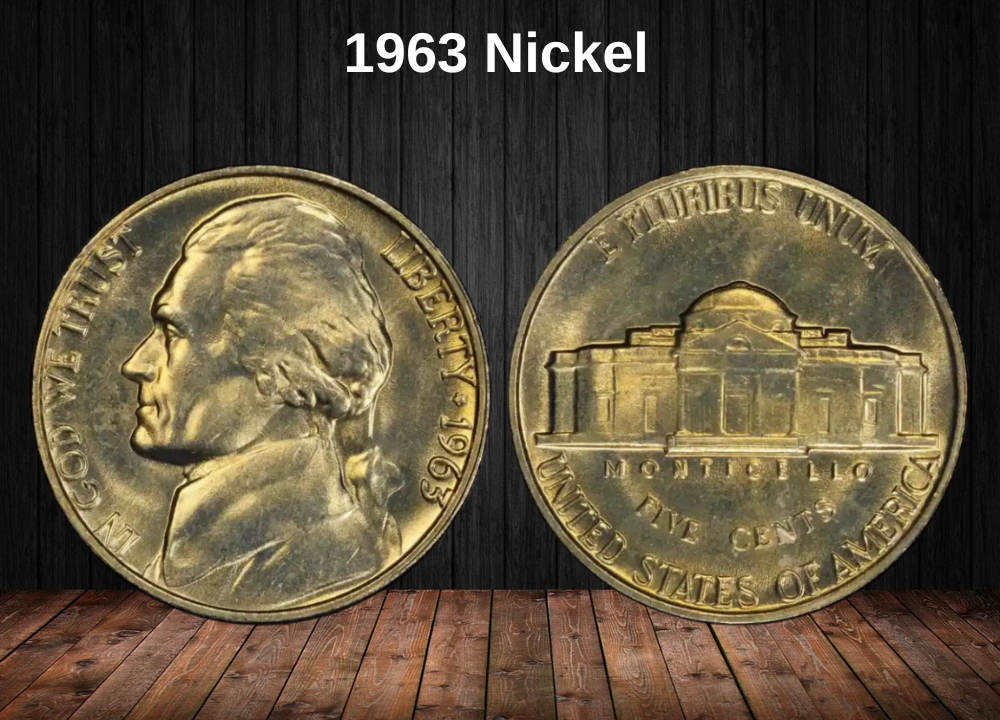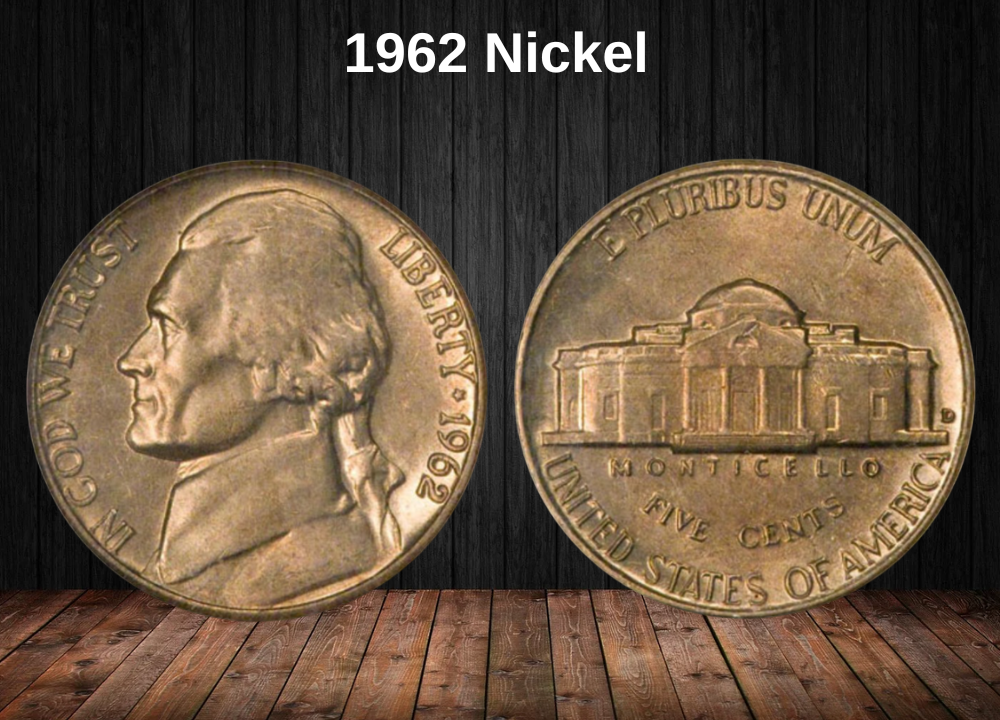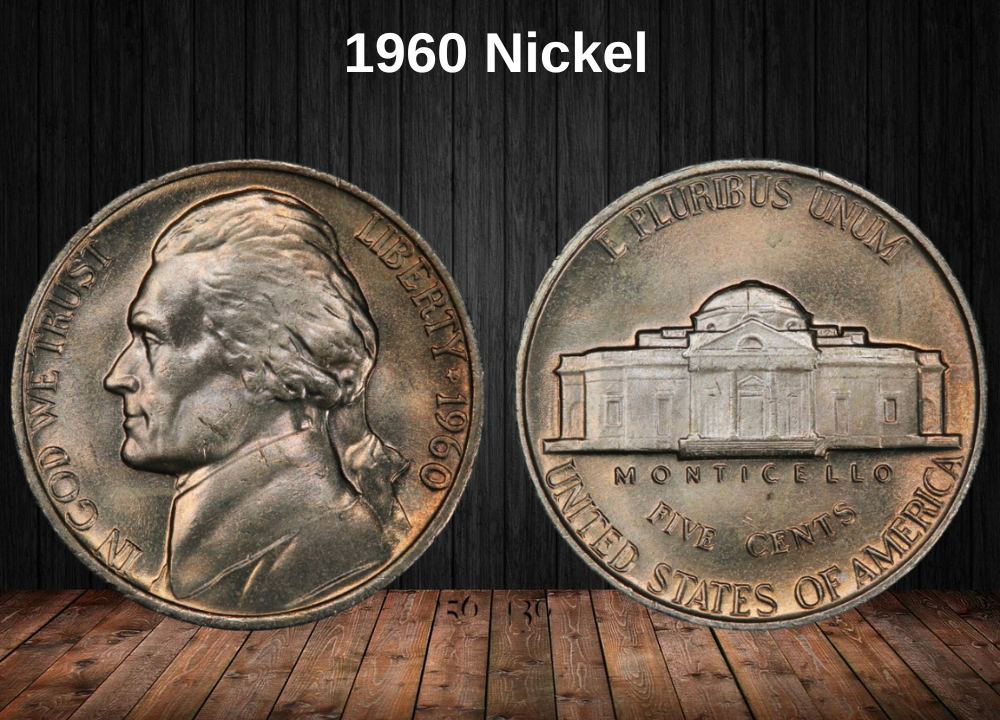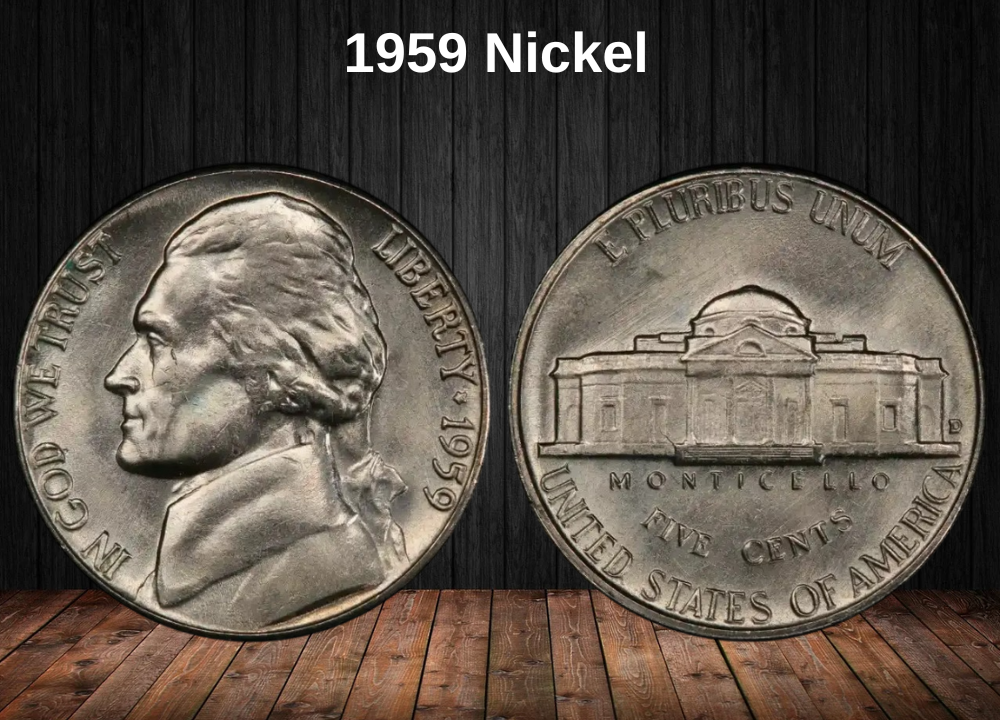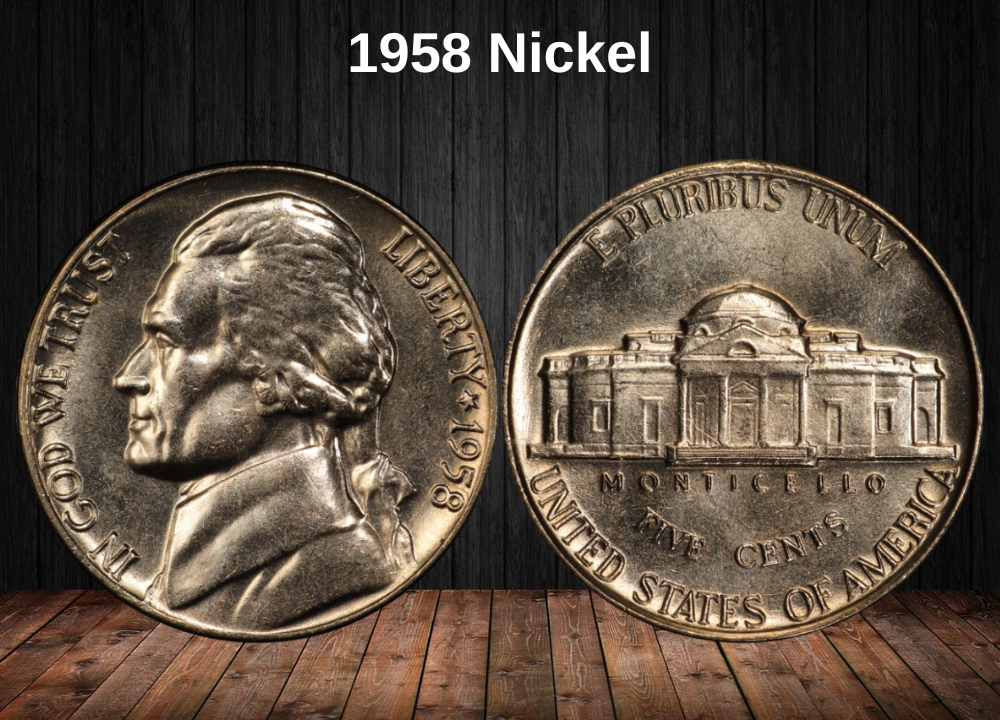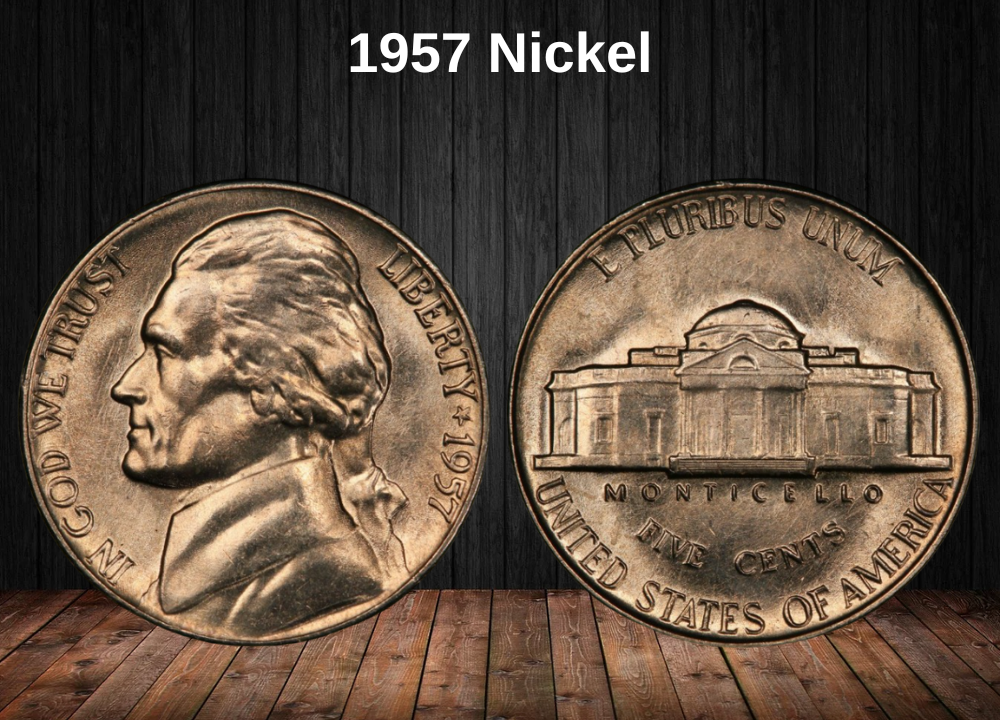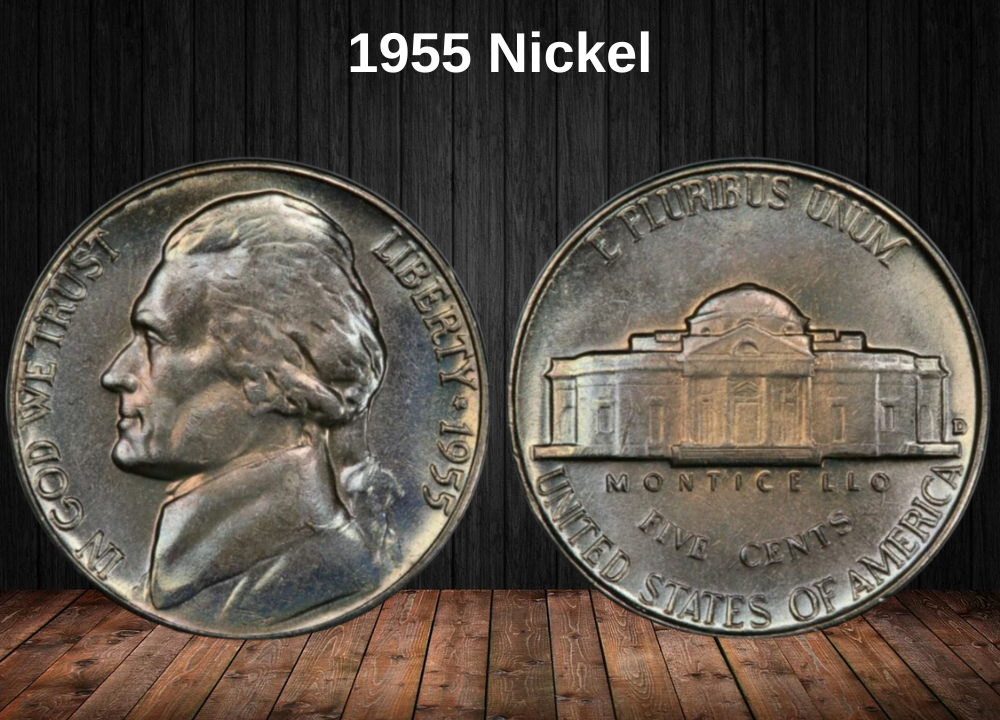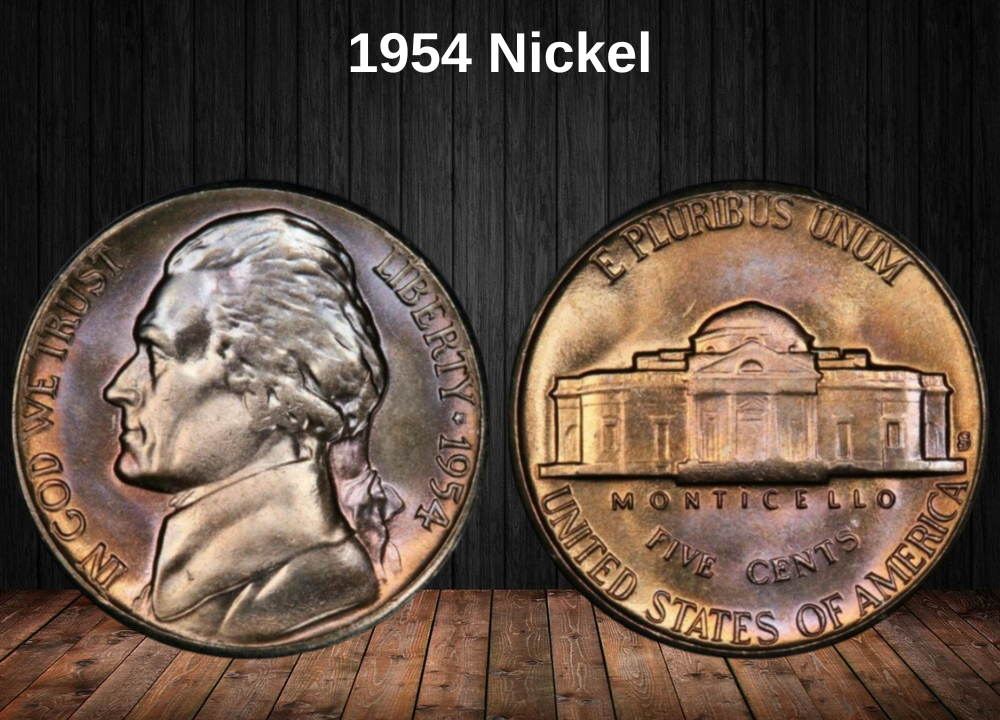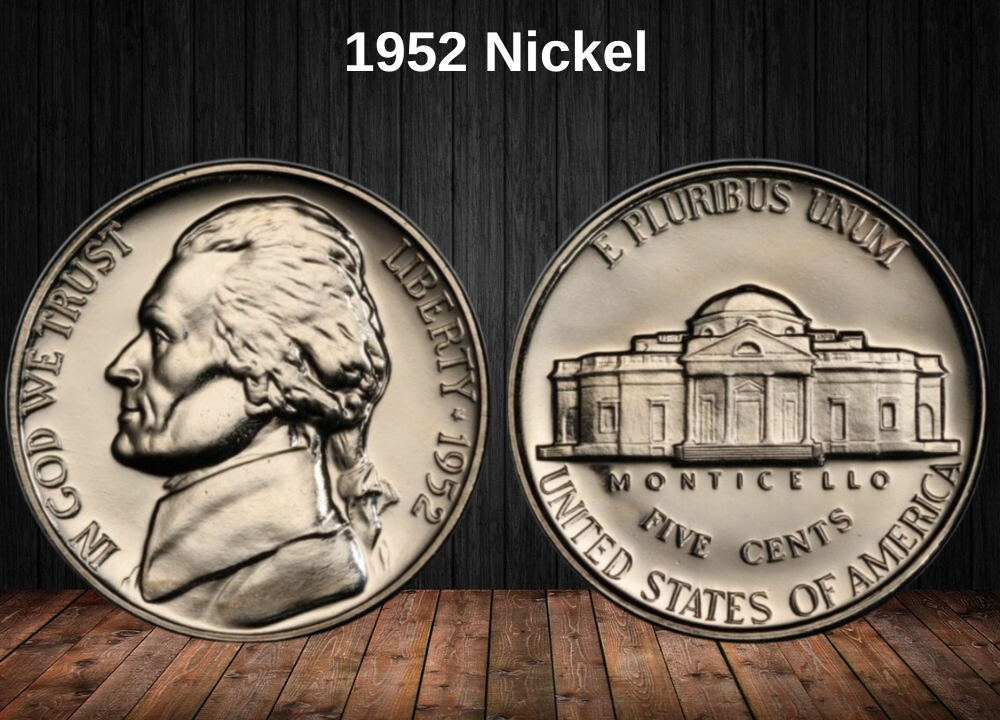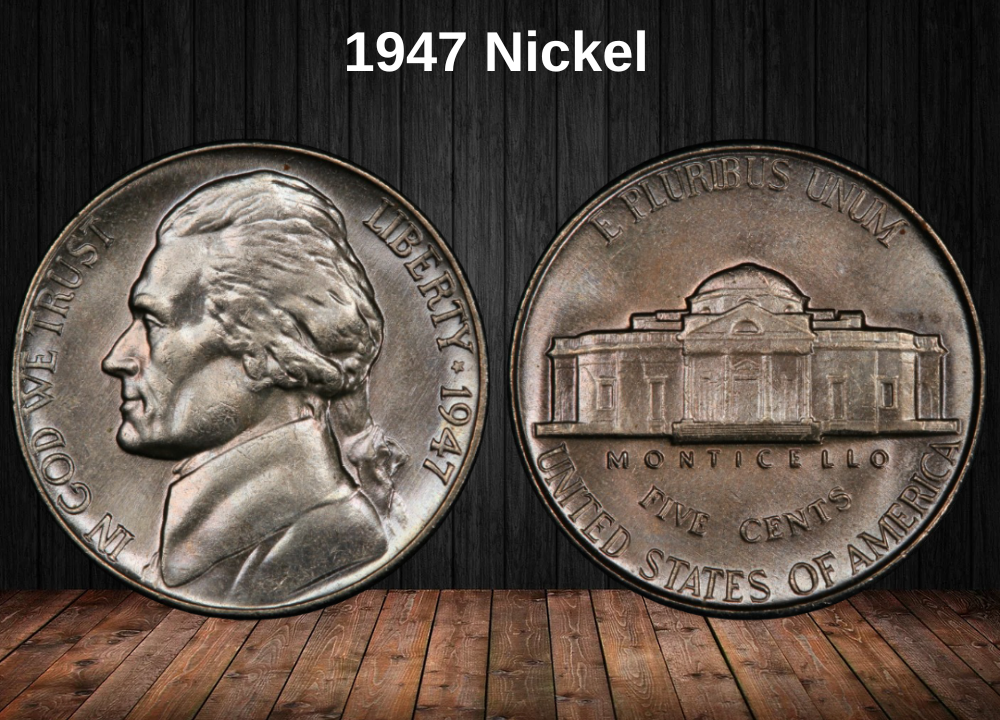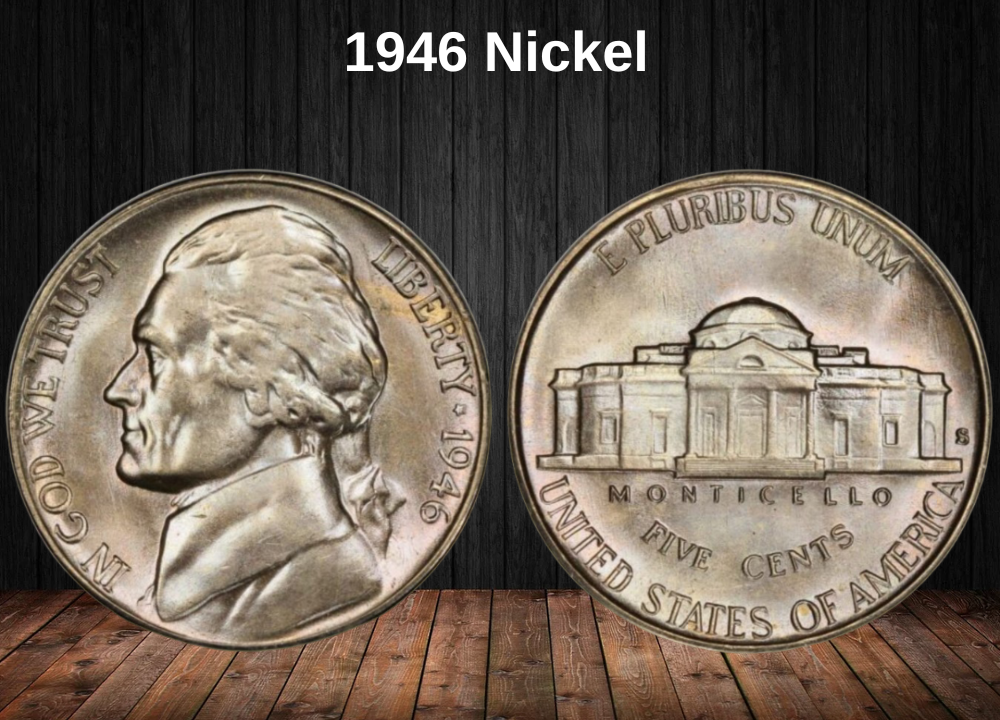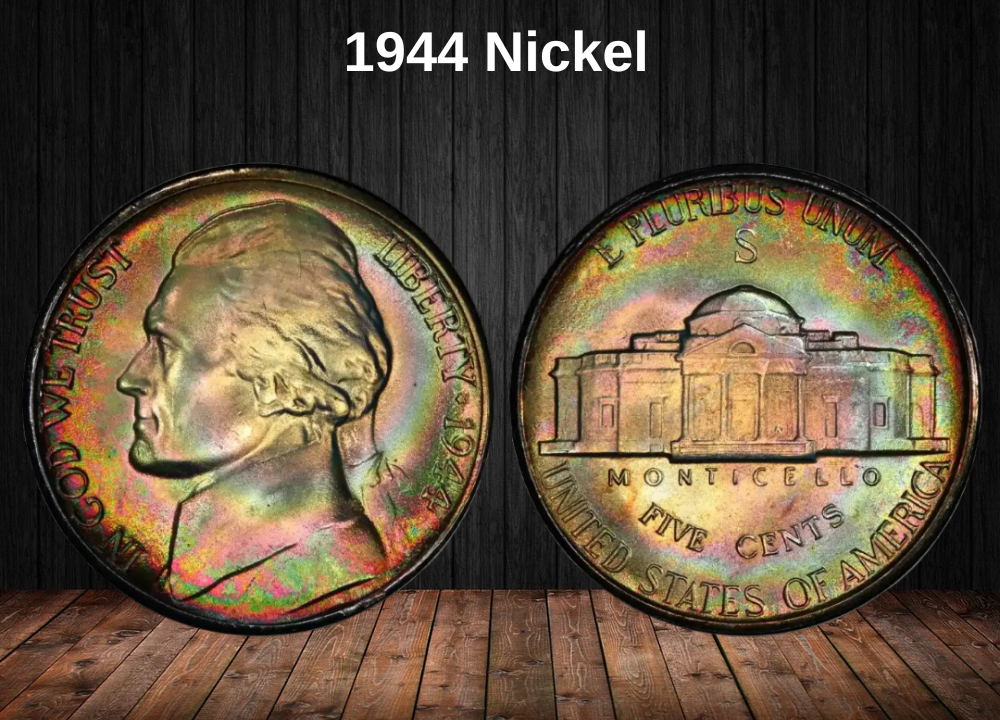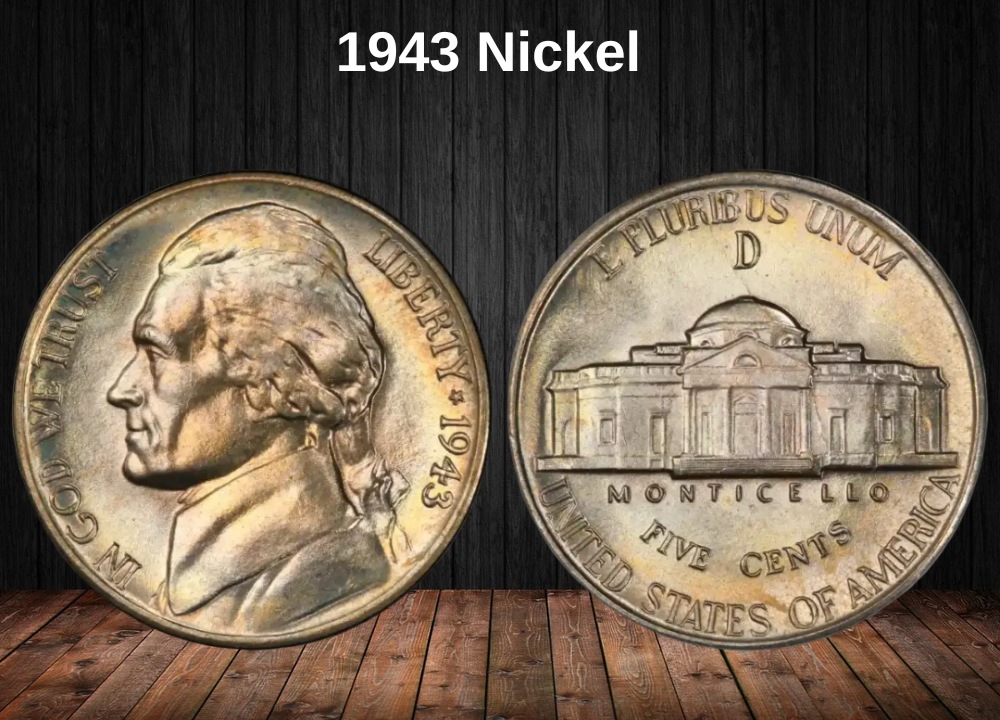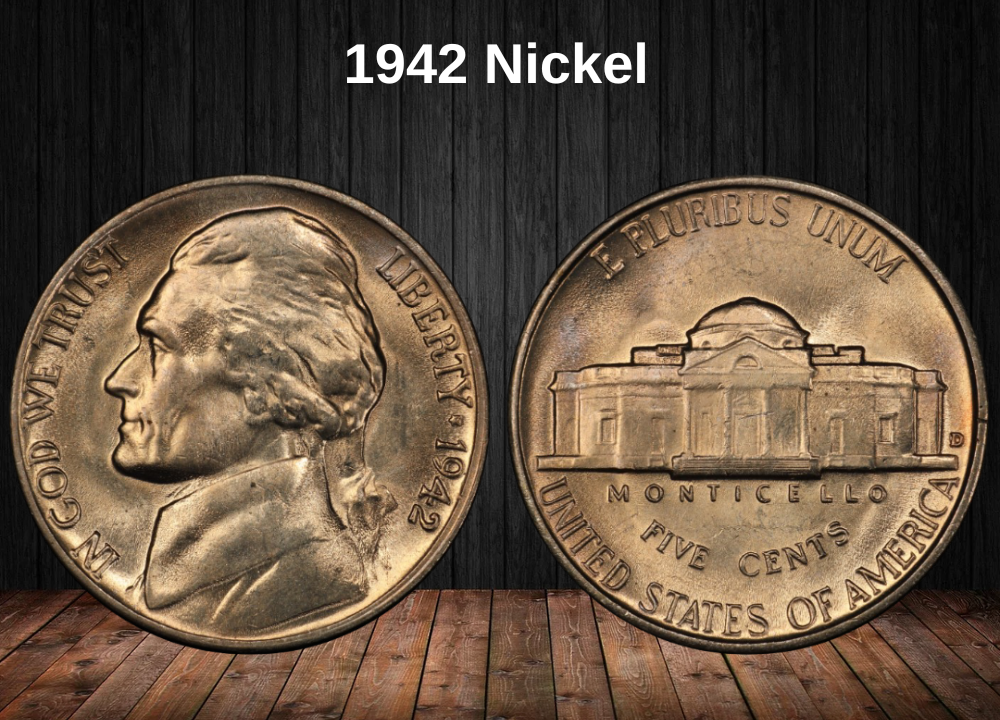You might come across old nickels in circulation without realizing they can be worth more than their face value. A good example is the 1948 Jefferson nickel, which is consistently valued above the five cents stamped on its front.
Its value increases significantly for coins in higher grades or those with rare minting errors. As for the composition, 1948 marks the third year after 1945 when the U.S. Mint stopped using silver in nickels. That means these coins do not contain any precious metals.
1948 Jefferson Nickel Value Chart
| Condition | 1948 (No Mint Mark) | 1948-S | 1948-D |
|---|---|---|---|
| MS 60 | $1.22 | $1.84 | $3.54 |
| MS 65 | $24 | $18 | $18 |
History of 1948 Jefferson Nickels
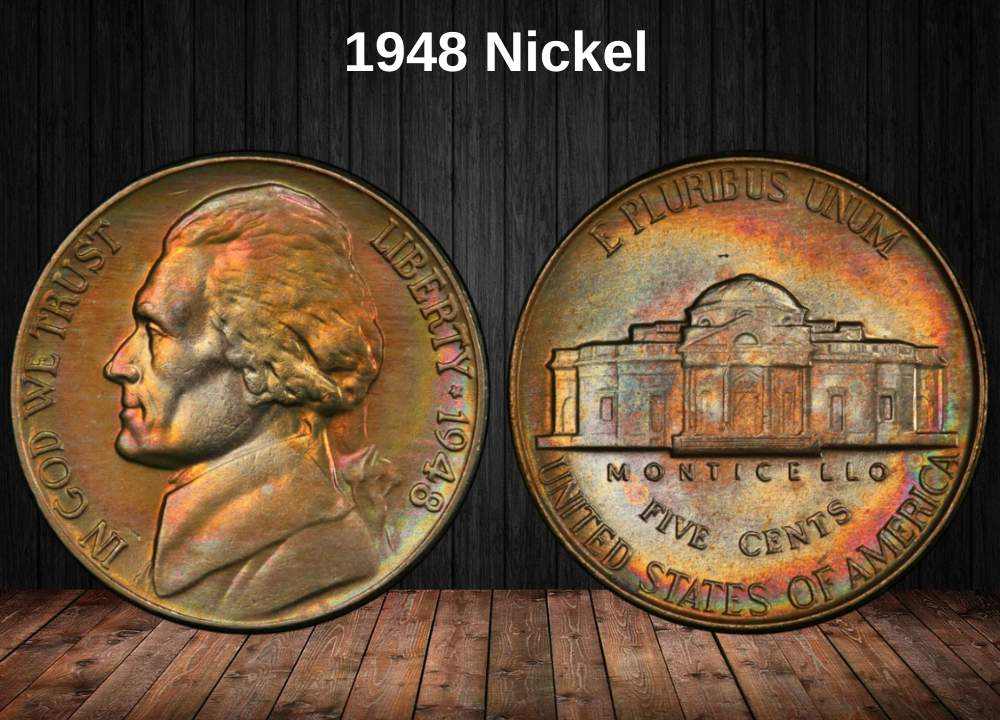
The story of American five-cent coins began with the silver half-dismes, produced between 1794 and 1805. These were followed by the introduction of the Shield nickels in 1866, later replaced by the Liberty Head (V) nickels, which circulated until 1913. After that came the famous Buffalo nickels, minted from 1913 to 1938.
The Jefferson nickel made its debut in 1938, just before the outbreak of World War II. By 1948, ten years into its production, the United States was in the early stages of post-war recovery, rebuilding after the significant impact of the conflict.
1948 Jefferson Nickel Mint Varieties
| Mint Location | Type | Mintage |
|---|---|---|
| Philadelphia | 1948 (No Mint Mark) | 89,348,000 |
| Denver | 1948-D | 44,734,000 |
| San Francisco | 1948-S | 11,300,000 |
| Total Production | 145,382,000 |
These nickels honor Thomas Jefferson, a Founding Father and the principal author of the Declaration of Independence. The coin’s design was created by Felix Schlag, who won a national competition and received a $1,000 cash prize for his winning artwork.
Unlike the Wartime nickels struck between 1942 and 1945, which featured an altered metal composition due to wartime needs, the 1948 nickels were made with the standard cupronickel alloy. Interestingly, 1948 marked the final year when Jefferson nickels displayed above-average strike quality, before lower-quality examples from the 1950s and 1960s began to circulate.
Features of 1948 Jefferson Nickels
The 1948 Jefferson Nickel Obverse
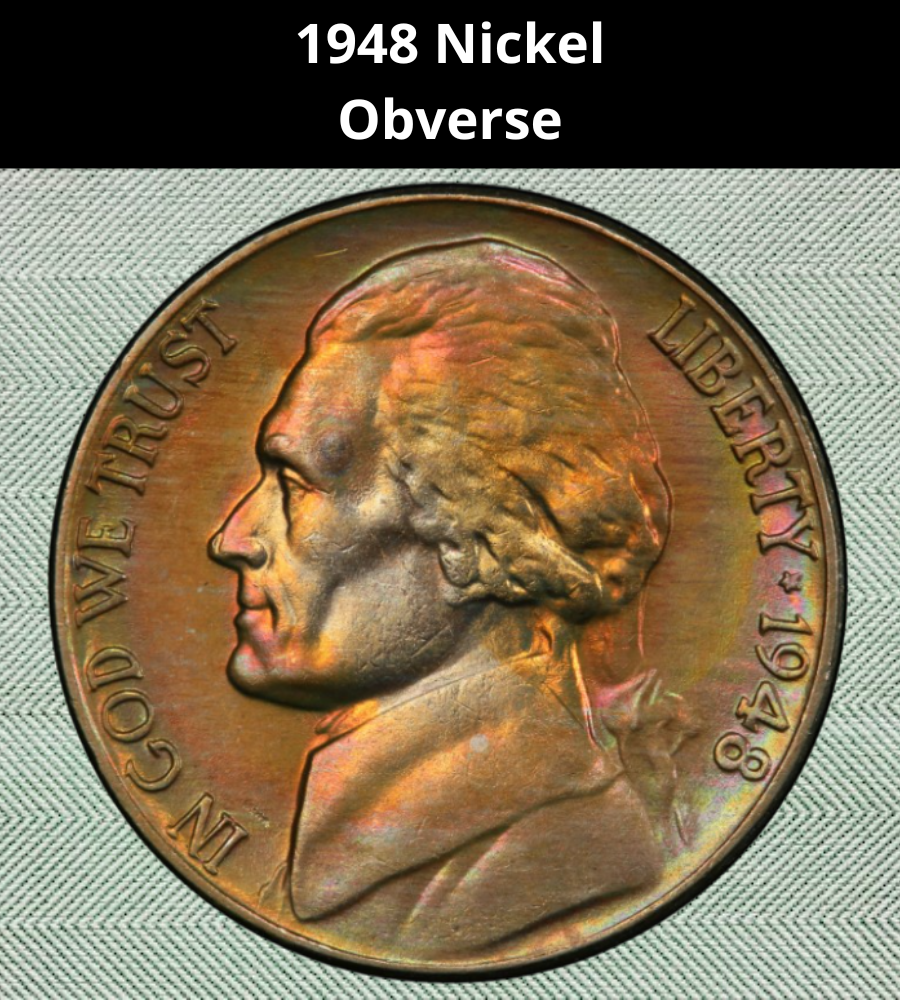
The front (obverse) of the 1948 Jefferson nickel features a left-facing portrait of Thomas Jefferson, the third President of the United States and a key figure in the nation’s founding. This image is inspired by the renowned sculpture of Jefferson created by Jean-Antoine Houdon, which is housed in the Museum of Fine Arts in Boston.
Surrounding Jefferson’s bust, you’ll find the inscriptions “IN GOD WE TRUST” and “LIBERTY” followed by a star (★) and the year “1948”. These elements are carefully arranged along the outer rim of the coin, framing the central image with a classic and patriotic design.
The 1948 Jefferson Nickel Reverse
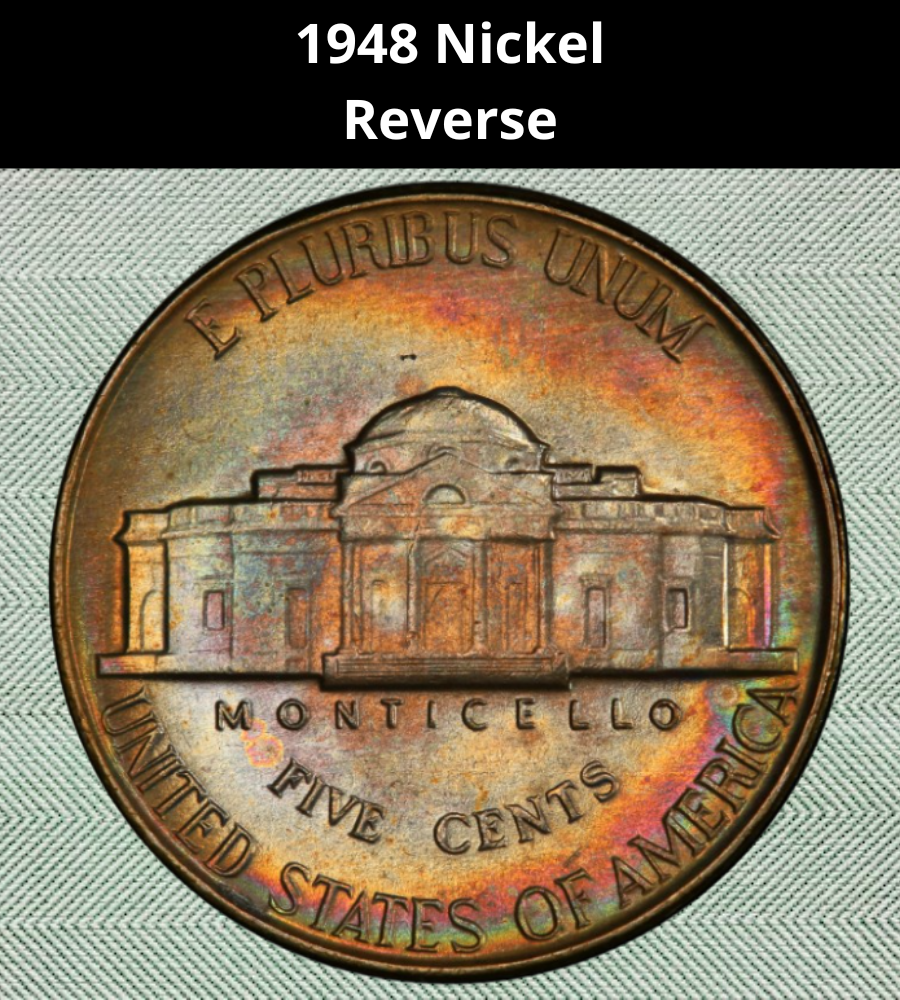
In contrast to its simpler obverse, the reverse of the 1948 Jefferson nickel features a more detailed and text-heavy design. At the center sits Monticello, the iconic Virginia estate of Thomas Jefferson, depicted with a classical architectural style.
Above the mansion is the Latin motto “E PLURIBUS UNUM”, meaning “Out of many, one.” Beneath the structure, three inscriptions are neatly stacked: “MONTICELLO” (the building’s name), “FIVE CENTS” (the coin’s denomination), and “UNITED STATES OF AMERICA” arching along the bottom rim.
A subtle but important detail for collectors is the number of visible steps at the base of Monticello. Jefferson’s home was originally engraved with five to six sharp steps, but due to common striking issues during production, many coins display only three or four faint steps. Well-struck examples with fully defined steps are considerably more valuable and sought after by numismatists.
Specifications of the 1948 Jefferson Nickel
| Feature | Details |
|---|---|
| Face Value | Five cents ($0.05) |
| Shape | Round |
| Composition | 75% copper, 25% nickel |
| Diameter | 0.83504 inches (21.20 mm) |
| Weight | 0.17637 ounces (5 grams) |
| Thickness | 0.07677 inches (1.95 mm) |
| Edge | Plain |
Grading the 1948 Jefferson Nickel
The most accurate and widely accepted method for evaluating your 1948 Jefferson nickel is the Sheldon Grading Scale. This system ranks coins on a scale from 1 to 70, based on their condition and level of detail.
Grades of GOOD or higher are considered collectible, while those in Mint State (MS) condition are often the most valuable. Proper grading can make a significant difference in the coin’s market worth.
Sheldon Scale Breakdown
| Grade Number | Grade Description |
|---|---|
| 1 | Basal State |
| 2 | Fair |
| 3 | Very Fair |
| 4 – 6 | Good |
| 7 – 10 | Very Good |
| 12 – 15 | Fine |
| 20 – 30 | Very Fine |
| 40 | Extremely Fine |
| 50 | About Uncirculated |
| 60 | Mint State (MS-60) |
| 65 | Mint State (MS-65) |
| 70 | Perfect Mint State (MS-70) |
1948 Nickel Value Guides
1948 No Mint Mark Nickel Value
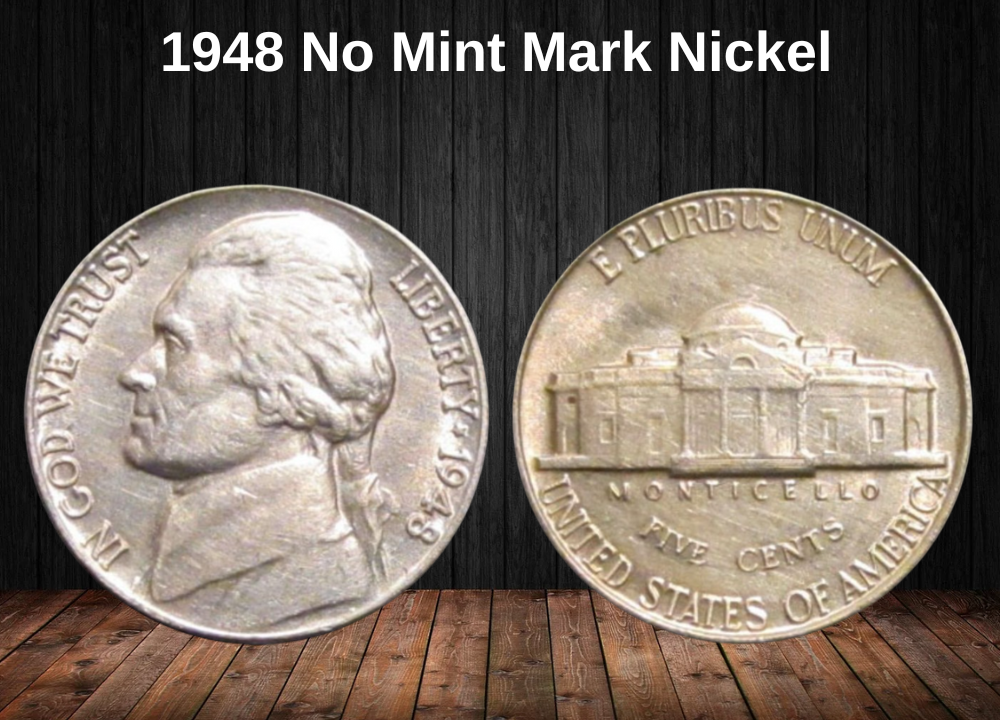
In 1948, the Philadelphia Mint produced an impressive total of 89,348,000 Jefferson nickels without a mint mark. Due to their large mintage and widespread circulation, many of these coins are still available today.
If you’re looking to buy a circulated example, prices typically range between $0.30 and $0.70, depending on the coin’s condition.
Even uncirculated coins, while not extremely rare, carry added value. Most mint state (MS) examples from this issue can sell for anywhere between $0.75 and $35.
However, exceptional specimens do exist. High-grade nickels from 1948 — particularly those graded MS 67 — are quite rare and highly sought after by collectors. One such coin was sold by GreatCollections in 2014 for $1,650, making it one of the most valuable known examples of this variety.
1948 D Nickel Value

In 1948, the Denver Mint struck a total of 44,734,000 nickels, making it the second-largest mintage for that year. These coins bear the “D” mint mark and are considered common in today’s coin market.
As a result, their value remains modest. Circulated examples typically sell for between $0.40 and $1.50, depending on wear and eye appeal.
Uncirculated coins from Denver are also widely available and affordable. Most mint state (MS) specimens range in price from $2 to $22. However, coins graded MS 67 are considerably scarcer and can reach values around $275.
Even at the high end, 1948-D nickels remain more affordable than their counterparts from Philadelphia or San Francisco. The most valuable known example was sold for $867 at a Stack’s Bowers auction on February 17, 2014.
1948 S Nickel Value
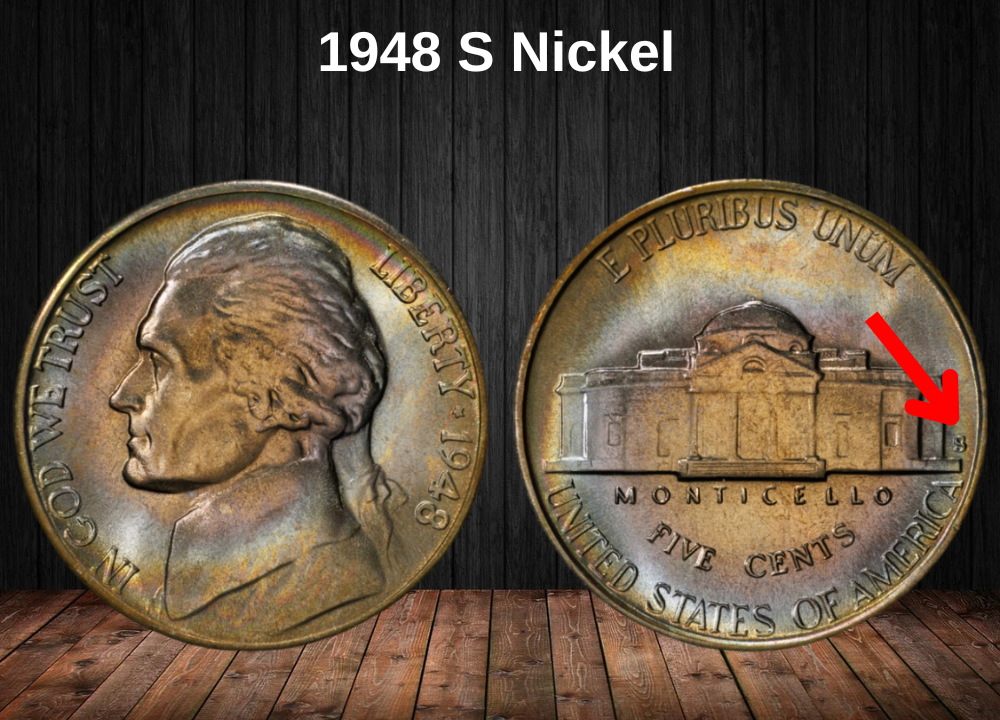
Although the San Francisco Mint produced only 11,300,000 nickels in 1948—making it the lowest mintage of the year—these coins remain surprisingly affordable for most collectors.
In circulated condition, a 1948-S nickel typically sells for $0.25 to $1. Even uncirculated examples are reasonably priced and accessible to entry-level collectors.
Here’s what you can expect to pay for various mint state (MS) grades:
- MS 60 – $2
- MS 61 – $2
- MS 62 – $3
- MS 63 – $6
- MS 64 – $14
- MS 65 – $16
- MS 66 – $22
- MS 67 – $250
Despite being affordable in most grades, one extraordinary 1948-S nickel shocked collectors when it sold for $2,240 at auction on October 26, 2021. Graded MS 68, this specimen is one of the finest known and significantly outshines top-dollar coins from the Philadelphia and Denver Mints.
Rare 1948 Jefferson Nickel Error List
1948 Jefferson Nickels with Full Steps (FS)
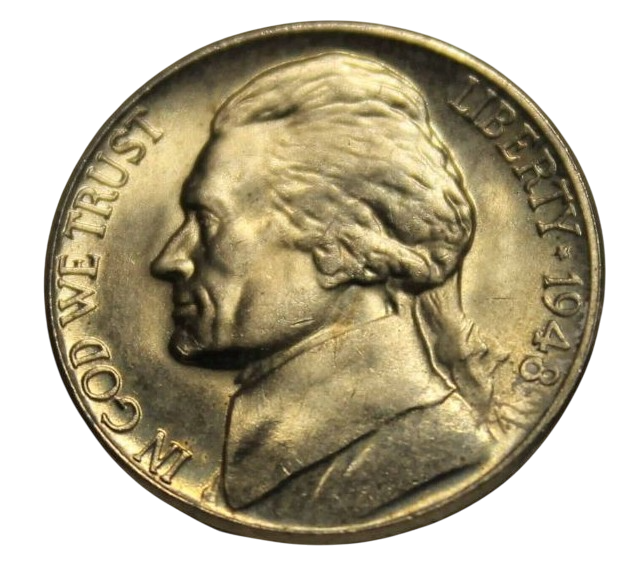
Full Steps (FS) Jefferson nickels are not mint errors—they’re actually how the coins were originally intended to appear. On the reverse side, beneath Monticello, well-struck examples reveal five or six distinct steps, fully separated and sharply defined.
Unfortunately, most 1948 nickels were struck with soft or incomplete detail, especially in the area of the steps. As a result, coins with clear Full Steps are considerably rarer and more valuable to collectors.
General Value of 1948 Full Steps Nickels
- MS-grade Full Steps nickels in average quality typically range from $22 to $300.
- Top-tier examples, especially those graded MS 67 FS, can reach around $2,000.
- Surprisingly, the highest price recorded wasn’t for an MS 67, but rather an MS 66 FS, which sold for an impressive $4,800 in 2021.
1948-D Full Steps Nickels
While less popular than other varieties, 1948-D nickels with Full Steps are still collectible:
- Most range from $11 to $350 depending on condition.
- However, one standout example—a 1948-D MS 67 FS—achieved a record-breaking $6,325 at an American Numismatic Rarities auction in 2006.
1948-S Full Steps Nickels
The market for 1948-S FS nickels is more complex:
- MS 64 FS examples are relatively common and can be found for about $12.
- Higher-grade pieces like MS 67 FS are valued around $800.
- Despite this modest range, one exceptional 1948-S FS nickel made headlines when it sold for a staggering $12,000 in 2021, making it the most valuable Full Steps coin of the entire 1948 set.
Re-Punched Mint Mark (RPM) Error on 1948 Nickels
The Re-punched Mint Mark (RPM) is a relatively uncommon minting error found on some 1948 Jefferson nickels. This error occurred when the mint mark was stamped more than once, usually to correct an initially misaligned, slanted, or upside-down punch.
In most cases, the letter was struck twice, and occasionally three times, creating a slightly shadowed or doubled appearance that can be seen under magnification.
Collectors value these RPM varieties for their uniqueness. While not extremely rare, they are more desirable than standard issues. Typical prices for a 1948 nickel with this error range from $7 to $15, depending on visibility.
The more pronounced the doubling, the higher the coin’s value, especially when combined with an overall high grade.
Off-Center (1948 S Nickel)
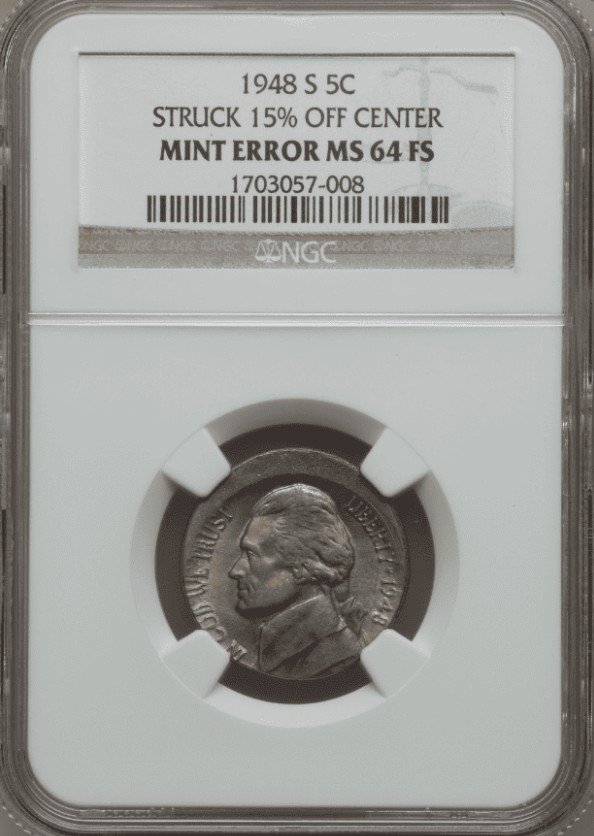
During the minting process, coin blanks (planchets) are supposed to be perfectly centered between the dies to ensure the design is struck in the correct position. However, if the planchet shifts even slightly, the result is an off-center strike—a noticeable minting error.
These coins display a partial design, with a blank crescent-shaped area where no image was struck. The degree of misalignment directly affects both appearance and value.
For the 1948-S Jefferson nickel, off-center errors are prized by collectors:
- Examples with a 5% to 10% shift are fairly common and generally sell for $3 to $10.
- Specimens with a dramatic 50% off-center strike, where the date is still visible, are much rarer and can be worth $75 or more, depending on condition and eye appeal.
Die Crack and Die Break Errors on 1948 Jefferson Nickels
A die crack or die break occurs when the metal die used to strike the coin becomes damaged—either developing fine cracks or larger breaks. When the damaged die strikes a blank planchet, it leaves behind a raised line or blob on the coin’s surface, usually in areas where the crack occurred.
These raised lines or irregular features are not part of the original design and are considered minting flaws. However, collectors find them fascinating, especially when the break is large or dramatically positioned.
- Minor die cracks usually add a small premium to the coin’s value, often in the range of a few dollars.
- Coins with more significant die breaks—especially those that are highly visible or create unusual shapes (like a “cud”)—can sell for up to $100 or more, depending on rarity and grade.
Doubled Die Error on 1948 Jefferson Nickels
A doubled die error happens during the die creation process, when the design is accidentally imprinted twice onto the die in slightly different positions. As a result, when that die is used to strike coins, certain parts of the design—such as letters, numbers, or facial features—appear doubled on the final coin.
On 1948 Jefferson nickels, the most notable example of this error is doubling on Thomas Jefferson’s eye, giving the coin a distinctive and unusual appearance that appeals to error collectors.
- Coins with this variety typically sell for $25 to $50, depending on the severity of the doubling and the coin’s overall condition.
While not extremely common, this variety is highly recognizable and adds both visual interest and value to any Jefferson nickel collection.
Lamination Error on 1948 Jefferson Nickels
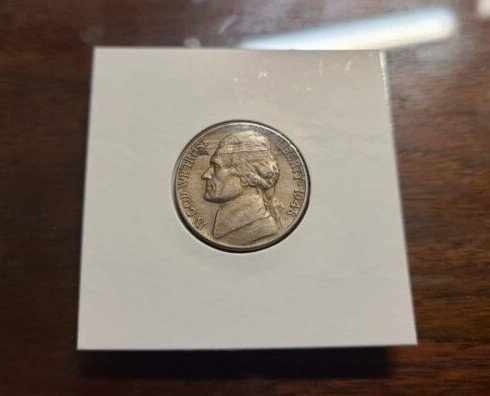
Despite the name, lamination errors on 1948 Jefferson nickels don’t involve actual laminates but arise from flaws in the copper-nickel alloy composition. Normally, these two metals are carefully bonded to form a stable coin. However, during production, improper mixing or contamination can cause the metal layers to separate or peel.
This results in coins exhibiting raised or recessed patches where the metal has split, flaked, or peeled away from the surface.
Collectors recognize lamination errors by these irregular surface textures and missing metal layers.
The value of nickels with lamination errors generally ranges from $5 to $50, depending on the severity and size of the affected area.
Where to sell your nickel?
Now that you’re aware of your nickel’s value, you may be curious about the best places to sell it. Don’t worry: here’s a rundown of some top online marketplaces where you can conveniently sell your nickels, along with their benefits and drawbacks.
Explore the best platforms for selling nickels online (advantages and disadvantages).
FAQ about 1948 Jefferson Nickels
1. What makes the 1948 Jefferson Nickel significant for collectors?
The 1948 Jefferson Nickel marks the return to the standard copper-nickel composition after WWII wartime changes. It also features various mint errors and varieties that appeal to collectors, making it an important transitional year.
2. What common minting errors are found on 1948 Jefferson Nickels?
Common errors include lamination errors (where layers of metal separate), double die strikes (causing doubled design elements), off-center strikes, and planchet defects. These errors can significantly increase a coin’s value.
3. How can I identify a lamination error on a 1948 Jefferson Nickel?
A lamination error occurs when the outer metal layer peels or bubbles, resulting in raised or recessed areas on the coin’s surface. It’s visible to the naked eye and can often be felt by running a finger over the coin, but it should be distinguished from post-mint damage.
4. What is the difference between the “D” and “S” mint marks on 1948 Jefferson Nickels?
The “D” mint mark indicates the Denver Mint, while “S” indicates the San Francisco Mint. In 1948, “S” mint coins tend to be scarcer in higher grades, making them more desirable to collectors, especially in uncirculated condition.
5. Are there any notable varieties or repunched mint marks in 1948 Jefferson Nickels?
Yes, some 1948 nickels show repunched mint marks (RPM), where the mint mark was struck more than once, creating a shadowed or doubled effect. These varieties are sought after by specialists and can command premium prices.
6. How does the condition (grade) of a 1948 Jefferson Nickel affect its value?
Condition is critical. While circulated examples are common and relatively low in value, uncirculated or high-grade specimens (MS60 and above) can be worth significantly more, especially if they display sharp details and no wear.
7. Were any 1948 Jefferson Nickels made with the WWII silver composition?
No. The silver wartime nickels were minted from mid-1942 to 1945. By 1948, production returned fully to the traditional copper-nickel alloy.
8. What are the key details to inspect when authenticating a 1948 Jefferson Nickel?
Collectors should check the correct alloy composition, mint mark authenticity, proper date font and placement, and look for any mint errors or alterations. Authentication by a professional grading service is recommended for high-value coins.
9. How does the 1948 Jefferson Nickel fit into the broader historical context of U.S. coinage?
The 1948 nickel represents the post-war return to peacetime coinage standards, reflecting economic recovery and the resumption of standard minting practices after wartime resource conservation.
10. Where can collectors find reliable pricing information for 1948 Jefferson Nickels?
Pricing can be found in specialized coin catalogs like the “Red Book” (A Guide Book of United States Coins), professional grading company population reports, and auction results from major numismatic houses.

